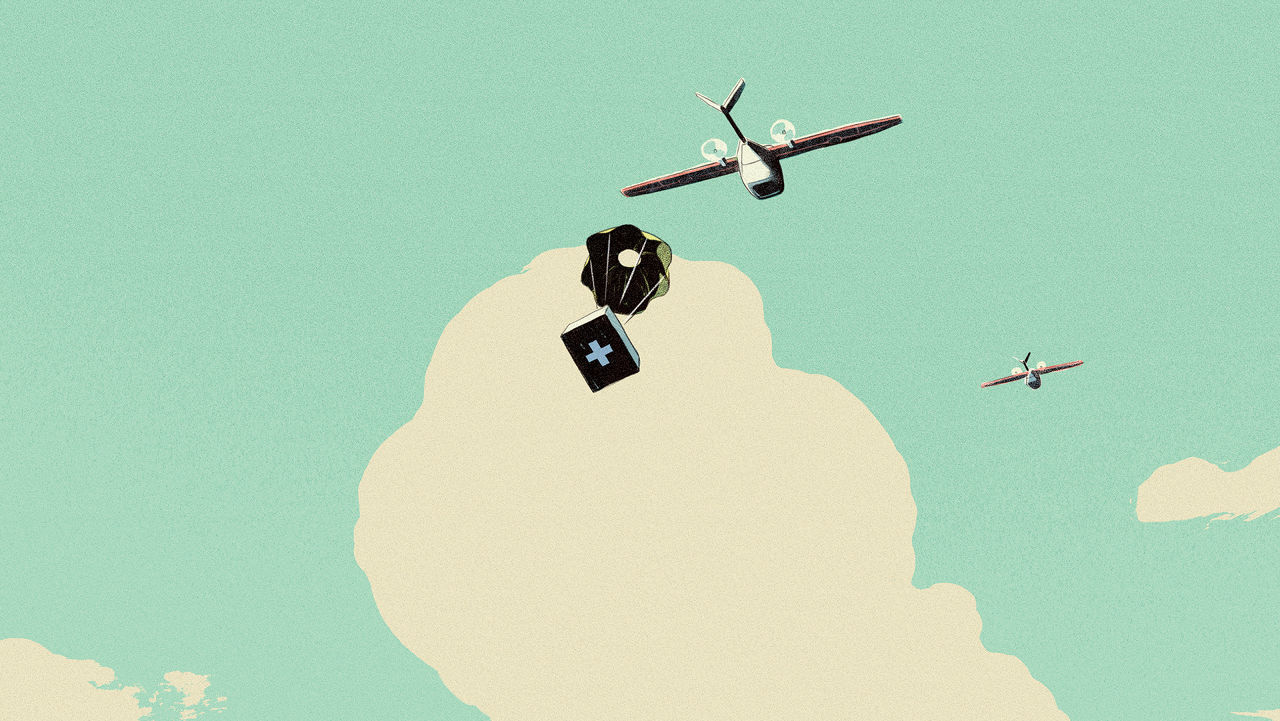A Life-Saving Drone Takes Off In Rwanda
The first company to start making drone deliveries at a high volume won’t be Amazon or DHL, but a startup sending medical supplies to hospitals throughout Rwanda.
San Francisco–based Zipline International plans to begin using its new airplane-style drones in late July to fly blood to rural Rwandan clinics hampered by impassable roadways and limited storage facilities while trying to keep up with an acute need for emergency transfusions, particularly during childbirth. With the country’s blood banks struggling to forecast demand, Zipline offers a simple solution: centralize the system into two distribution hubs that place every health clinic in the small African nation only a 15- to 45-minute drone-delivery flight away. “We’ve been trying to solve this problem for 50 years, using traditional forms of technology like trucks and motorcycles in environments that don’t have the necessary infrastructure for those vehicles to work,” says Keller Rinaudo, Zipline’s cofounder. So why not take to the skies instead?
In the last half-decade, a flurry of startups and not-for-profit organizations have been exploring how drones might aid in everything from environmental conservation to disaster relief (see “Friendly Skies,” above), but few are ready to deploy drones on a large scale. That’s where Zipline stands apart. Working in concert with the Rwandan Ministry of Health and with the backing of Silicon Valley heavy hitters such as Sequoia Capital and Google Ventures (in addition to logistical advice from UPS), the two-year-old company will be the first to operate a national fleet.
The key to Zipline’s power lies in its novel approach to drone design. Early on, Rinaudo decided to avoid off-the-shelf quadcopters, which can land with precision but are typically unable to fly for more than about 15 minutes and farther than six miles. In other words, they’re not suited to matters of life and death. “Quadcopters are famously inefficient,” says Todd Humphreys, an aerospace engineering professor from the University of Texas, Austin. So Rinaudo, who spun off Zipline from a robotics company that he founded in 2011, set out to make a drone from scratch.
To create something that can reliably fly longer distances—over obstacles, and in the worst wind and rain—the Zipline team, which consists of aerospace engineers from companies such as SpaceX and Boeing, looked to the sturdy yet lightweight construction of standard airplanes. Though the Zip drone can’t set a package down (supplies are instead parachuted in), its design allows it to fly with stunning speed (up to 62 mph for this model; the next-generation one will be faster) and carry as much as 3.5 pounds of medical supplies as far as 93 miles on a single charge—15 times farther than a standard drone. Meanwhile, internal redundancies, including a backup engine and computer, ensure that the Zip safely arrives at its destination. “This [type of construction] has been done at a commercial airliner scale,” says Rinaudo. “We’re basically figuring out, ‘How do we do this using much more affordable components, at a much smaller scale, so it can actually service these kinds of use cases where human lives are at risk?’ ”
In Rwanda, a team of five U.S. and local engineers will run one base of drones, covering half of the Massachusetts-size country. (The second base will open in 2017.) After clinics send in their orders for blood via text, military-grade GPS will guide drones to local delivery drop sites. Each base will have 15 drones and be responsible for as many as 150 flights to rural clinics each day.
Rwanda’s embrace of Zipline is in contrast to the situation in the United States, where FAA regulations have made drone-delivery networks impossible so far. The African country, which recently launched a $100 million venture fund in an effort to create 100 tech companies valued at more than $50 million by 2030, is burnishing its credentials as a startup-friendly hub. And if the new Zipline system works, every one of Rwanda’s 11 million citizens could soon be a short drone ride away from any essential medical product.
The Zipline team believes that this kind of medical delivery system will become a normal part of life in Rwanda and elsewhere. The company plans to expand its deliveries to include vaccines and medication for malaria, HIV/AIDS, and other diseases. It’s also hoping to expand into other African countries later this year. “The idea may look a little out there, on its face,” says Rinaudo. “But I actually think it won’t take very long for health workers, hospitals, and the population at large to say, ‘Yeah, that’s how we should be solving that problem.’ ”
Zipline has already received requests from other companies interested in using its technology for more mundane tasks, such as delivering snacks. But the company isn’t interested. “We’re 100% focused on serving health care systems because it’s so obvious that is where the need is the highest,” Rinaudo says. “Every delivery you make is potentially saving a human life.”
Have something to say about this article? You can email us and let us know. If it’s interesting and thoughtful, we may publish your response.
A version of this article appeared in the July/August issue of Fast Company magazine.
Fast Company , Read Full Story
(13)



